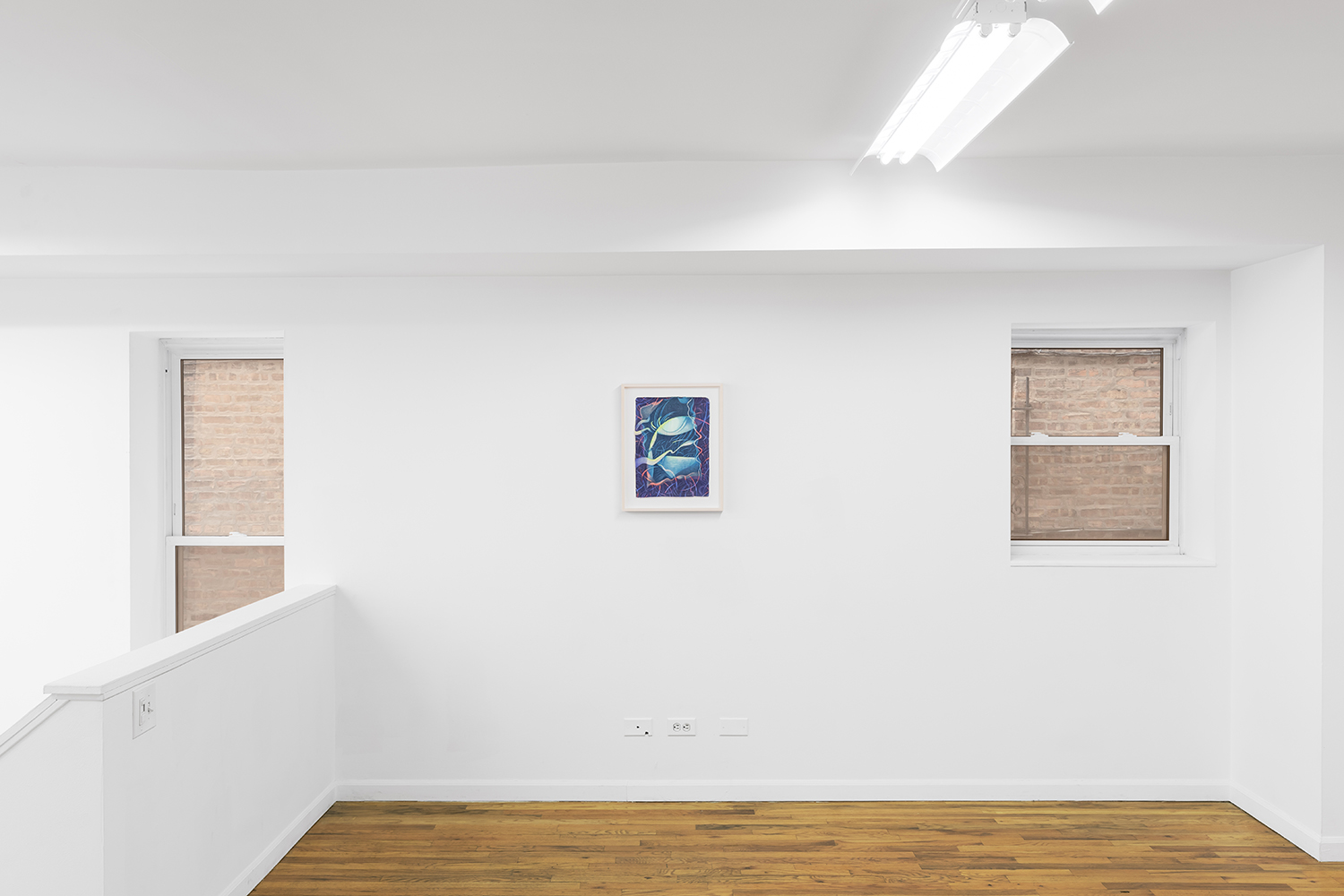Megan Greene
Shrimp Eagle Owl
February 5 - March 19
Shrimp Eagle Owl
February 5 - March 19

I made these drawings during Covid times. I’m not sure that’s relevant, though it may be that the strange circumscription of these two years has fed the otherworldly quality of my recent work.
These drawings aren’t landscapes, but use the language of landscape—horizon, landform, atmosphere, flora, etc. They allude to unseen spaces or conditions (e.g. microscopic, cosmic, ultraviolet), but are ultimately, and hopefully, incoherent as any attempt at true representation. They feel like drawings of somewhere but detached from when and where, and all laws of nature.
– Megan Greene
Megan Greene’s latest exhibition at Regards, Shrimp Eagle Owl, features a set of 11 new drawings that push her already highly explorative and technically disciplined approach into more vibrant and denser terrain. Compositional energies thrust vertically up and down, intersecting with horizontally segmented zones, defining and betraying notions of clear spatiality. Within any single drawing, there are multiple sites of layered transformations happening at different speeds and for seemingly different reasons. Colors and forms that feel simultaneously familiar and unknown are intensified to create continuums across works that are more pronounced than in previous series. Wispy plants, human fingers and ears, or orbs that seem both planetary and ocular pop up across drawings filled with less definable structures and shapes.
Due to the unforgiving nature of her chosen medium of colored pencil, Greene’s process is almost entirely additive (no going back, only forward) and has led her to an approach to improvisation that is necessarily slow. Artists, especially improvisors, and especially those who exhibit the level of material mastery that Greene does, refuse to allow themselves to find meaning in their work through mere execution. Through drawing, cutting, positional reorientation, Greene creates obstacles for herself that force her into uncertainty. This process isn’t novel to her latest work, but it has clearly been honed to such a degree that it is no longer used solely to disrupt particular choices within a single piece, but rather to span the gaps from one drawing to the next.
These drawings amplify everything that is strange and challenging about what we know and how we come to know it. Whether we find ourselves focusing on the unexpected combinations of form or unbelievable evidence of skill, every aspect of each drawing’s production and depiction leads us to question what is possible: within drawings and art to be sure, but also, and perhaps more importantly, within the world that we perceive, that we occupy, that we constantly strive to comprehend.